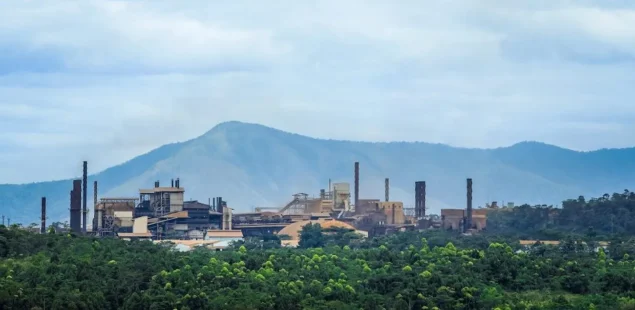
Current Platinum Price Trends
As of Q2 2025, platinum prices are showing modest recovery from their 2023 lows. The metal is currently trading around $950–$1,000 per ounce, up from sub-$900 levels seen during the economic slowdown of 2023. Key drivers of recent price behavior include:
- Reduced automotive demand due to slower EV adoption and economic headwinds.
- Rising interest in hydrogen technology, which uses platinum as a catalyst.
- Constrained mining output, especially from South Africa.
Despite historically being more expensive than gold, platinum price is falling has been a common headline in recent years due to structural shifts in industrial demand. Yet, with renewed focus on decarbonization and hydrogen infrastructure, platinum metal news is increasingly positive about the long-term potential.
Platinum Price Forecasts for 2025
Analysts project cautious optimism for platinum price projections in 2025. Most forecast a price range of $1,100–$1,300/oz, with upside potential if industrial and investment demand accelerates.
- UBS expects prices to reach $1,150/oz by Q4 2025, citing increased hydrogen economy investments.
- JPMorgan predicts mild gains, projecting a 2025 average of $1,110/oz, assuming steady recovery in global auto sales.
- Metals Focus highlights potential volatility, with scenarios ranging from $1,050 to $1,350 depending on supply shocks or investor interest.
Market sentiment is shifting from bearish to neutral-to-bullish as platinum finds a new role beyond autocatalysts, particularly in clean energy applications.
Supply and Demand Dynamics
Platinum supply is geographically concentrated, with South Africa supplying over 70% of global production. Disruptions from labor unrest, power outages (notably from Eskom), and regulatory pressure frequently impact output. Russia and Zimbabwe are also significant contributors.
On the demand side, key sectors include:
- Automotive industry: Platinum is used in catalytic converters for diesel engines. Though declining in Europe, demand is declining in Europe and showing signs of weakening even in heavy-duty vehicles and emerging markets.
- Hydrogen sector: Fuel cells and electrolyzers rely heavily on platinum-group metals, representing a fast-growing demand vertical.
- Jewelry and investment: Platinum continues to attract interest, especially in Asia and among precious metals investors diversifying from gold.
The balance between these forces will determine whether platinum price is rising or continues to lag compared to other PGMs like palladium.
Impact of Geopolitical Events
Geopolitical developments heavily influence platinum metal prediction scenarios. For instance:
- South Africa’s energy crisis continues to hinder stable mining output, limiting global supply.
- Russia’s geopolitical isolation has rerouted platinum exports and raised risk premiums.
- Western sanctions and the redrawing of trade alliances are impacting refining and trading flows.
Additionally, policy shifts in support of clean energy — notably the U.S. Inflation Reduction Act and the EU Green Deal — are creating new incentives for platinum-intensive technologies. Platinum news increasingly reflects how political and regulatory landscapes are becoming central to pricing models.
Investment Considerations
Is platinum a good metal to invest in? The answer depends on investor horizon and risk tolerance.
Upside drivers include:
- Underpriced valuation relative to gold and palladium.
- Strategic role in the hydrogen economy.
- Potential for supply shocks from geopolitically unstable producers.
Risks include:
- Weak jewelry and diesel demand.
- Competition from cheaper alternatives like palladium and rhodium in some industrial applications.
- Low investor interest compared to gold or silver.
For long-term investors, platinum may offer contrarian value. Platinum price expectations are rising in alignment with clean tech developments, making the metal a potential hedge against traditional energy markets and carbon-intensive industries.
FAQ
What is happening with platinum?
Platinum is experiencing a transitional phase. Traditional demand from diesel autocatalysts is declining, but new opportunities in hydrogen fuel cells and electrolyzers are emerging. Prices have recovered from recent lows, but remain historically undervalued, creating both risks and opportunities.
Is platinum going to skyrocket?
A sharp spike in platinum price is unlikely without a major supply disruption or sudden demand surge. However, if hydrogen adoption scales faster than expected and mining remains constrained, prices could trend significantly higher. For now, steady gains appear more realistic than a “skyrocket” scenario.
How much will platinum be in 5 years?
Most forecasts suggest platinum could reach $1,400–$1,600/oz by 2030, assuming increased industrial usage and stable production. This would represent a 30–50% gain from current levels, contingent on geopolitical and technological developments.
Is platinum a good metal to invest in?
Platinum is a high-risk, high-reward investment. Its unique position in clean energy tech gives it long-term promise, but short-term volatility is high. Diversified exposure — through ETFs, mining stocks, or physical metal — may offer balanced risk-adjusted returns for strategic investors.



